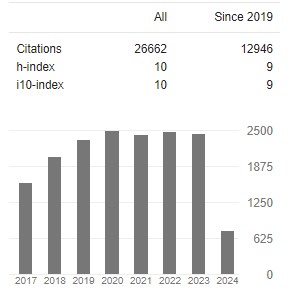Factors Militating Against Nigerian Youths Taking Up Careers in Agriculture in Gwarinpa, Abuja, Nigeria
Abstract
Ihedioha C. Angelica, Samson O. Sennuga, Osho-Lagunju Bankole, Mary, E. Iheonu, Funso O. Alabuja, Joseph Bamidele and Timipre J. Preyor
The research was carried to determine the factors militating against Nigerian youths taking up careers in agriculture in Gwarinpa, Amac, and FCT. The population for this study was derived from the youths in 5 Avenues in Gwarinpa, Amac, FCT, and Abuja. A simple random sampling method was used in this research to select a sample size of 120 respondents for this research. Respondents in Gwarinpa were given self-administered questionnaires, which were used to gather data. Based on the questionnaires, data were analyzed using a statistical software for social sciences utilizing descriptive statistics. According to the findings, there were more male youths (65.00%) than female youths (35.00%). 34.17% were within the age of 31 – 35 (34.17%) while 29.17% were within the age of 26 – 30. 60.00% were single, while 25.83% were married and 6.67 were divorced. 68.33% had house hold size between 1-5 while 17.50% of the youth had 6-10 people in their house hold. 39.17% had tertiary education, 48.33% had secondary education while 12.50%. The respondents indicated that; agriculture is a lucrative occupation (mean = 3.08), agriculture as an occu- pation is not for a highly educated youth (mean = 3.23) and agriculture is a decent job for employer of labour (mean = 2.87) and that agriculture is for the elderly and illiterates (mean = 2.91). Family choice and youth preference (mean =3.64) was the major factor affecting youths decision in agricultural career. Respondents concurred that the absence of Agriculture support services, such as youth extension in the community is another factor affecting the career choice of youth in agriculture. Other factors that were agreed by respondents as affecting career choice in agriculture are; Lack of an organized ready market (mean = 3.04), Lack of credit facility without collateral (mean = 3.05), absence of agriculture inputs such as modified seeds, seedlings and agrochemicals (mean = 2.93). Poultry farming was the young people’s top profession choice in the research area (93.33%) followed by fisheries production (85.00%) and agronomic practice (68.33%). Socio-economic elements that play a role in perception of youths on agriculture showed that socio economic characteristics such as gender, occupation, annual income and level of education had significant effect on the perception on the youth on agriculture.




